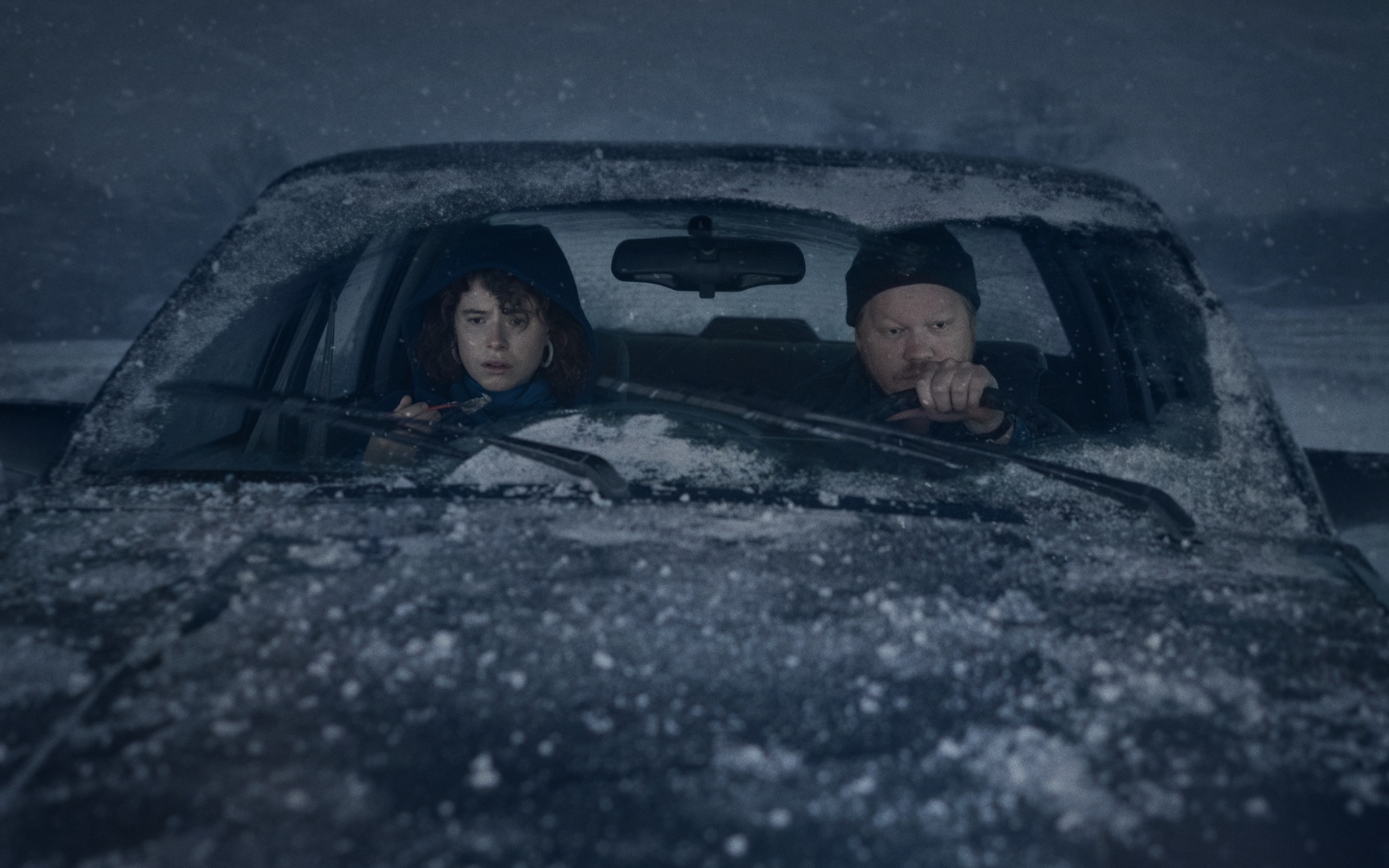This article contains spoilers for the book and film I’m Thinking of Ending Things.
Ian Reid’s 2016 debut novel, I’m Thinking of Ending Things, is a twisted trip through a single character’s despairing stream of consciousness. It’s a book in which almost nothing that happens is actually happening and most of the characters aren’t real—in other words, you’d think it would be unfilmable. Charlie Kaufman had a unique challenge with his adaptation: take a novel which is set entirely within a character’s mind and materialize it, without compromising the story’s subjective, psychological nature.
The basic story of the book and the film are the same, although explaining the plot does little to convey the psychological depths Reid and Kaufman plumb. A young woman (played in the film by Jessie Buckley) goes on a road trip with her new boyfriend, Jake (Jesse Plemons), to visit his parents (David Thewlis and Toni Collette) for the first time. In both book and film, the stops on the trip are the same: first Jake’s parents’ house, then a 24-hour drive-thru restaurant, and finally a remote high school that Jake feels suspiciously drawn to. Within that framework, the ever-creative and experimental Kaufman pulls off the tricky task of putting his own stamp on the material while staying true to the atmosphere of dread that Reid created.
I: Creating a psychological space
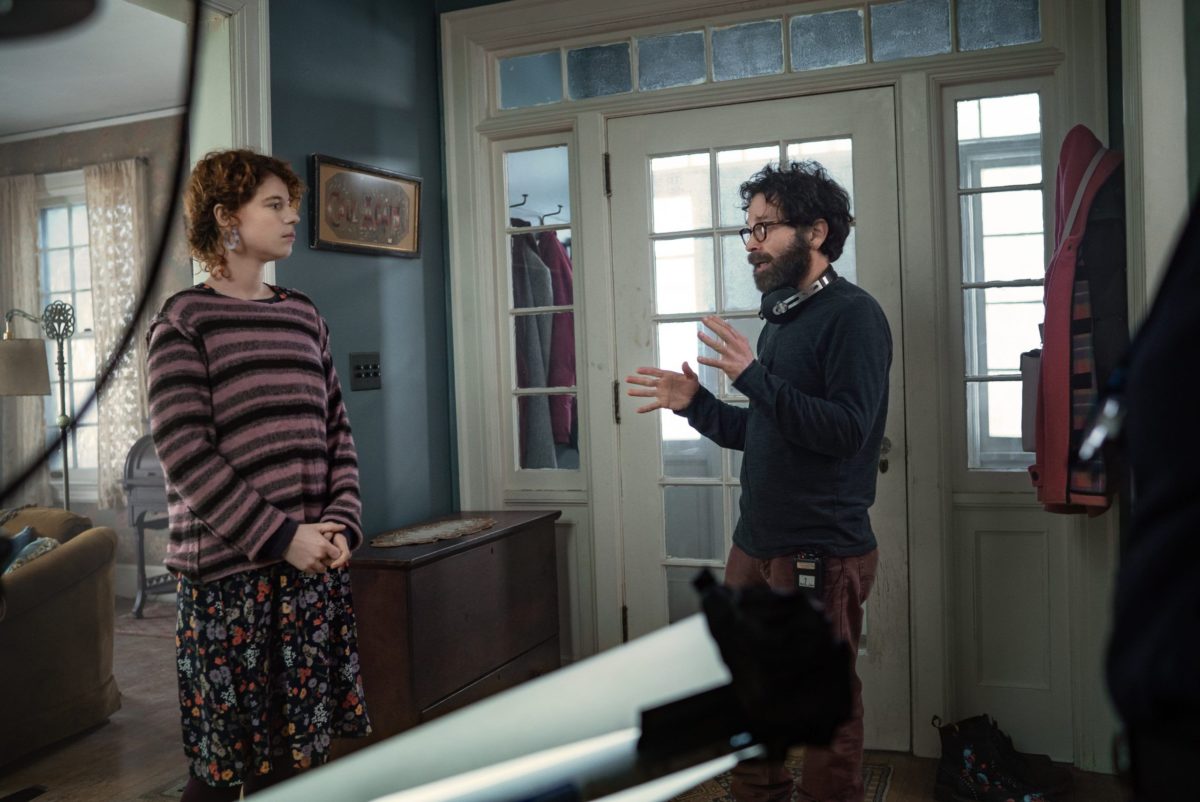
In Reid’s novel, each chapter is interspersed with a page of dialogue in italics, a conversation between two unnamed people discussing the suicide of the janitor at the school where they work. It’s revealed at the end of the novel that the story of Jake and the Young Woman is a manuscript that the janitor wrote in the days leading up to his death, akin to an alternate reality he constructed to help him decide whether life was worth living. Quite literally, the whole book takes place in the janitor’s head, and each character is a splinter of his possibly schizophrenic mind. That’s easier to buy in literature—an inherently psychological medium—but harder in a film where these characters are played by flesh and blood actors who exist in a physical space that we can see and hear. One of Kaufman’s toughest challenges in adapting the novel was convincing the audience that the story takes place in a psychological rather than literal space.
Kaufman lays out subtle clues throughout that I’m Thinking of Ending Things doesn’t take place in the real world. He replicates the subjectivity of Reid’s book by constantly shifting our perception of reality: as in the novel, the Young Woman keeps changing name and profession—one moment she’s a poet called Lucy, the next a physicist named Amy. Kaufman breaks continuity in the visuals, too, as Buckley’s and Plemons’ costumes shift color between scenes. As the Young Woman grows more disturbed, the film starts to look more nightmarish: during the second leg of the car journey, all you can see outside the windows is a pit of blackness and an angry snowstorm, as if the terrifying claustrophobia of her thoughts have manifested in her surroundings. In a blink-and-you-miss-it shot during the ride home, Buckley is even replaced with another actress.
These disorienting details lay the groundwork for the film’s bizarre final sequence, in which Kaufman departs from reality––and his source material––entirely. In Reid’s novel, the main character breaks down as they wander the school halls and lock themselves in a closet, at which point Reid quite graphically describes their suicide. In the final pages, the narrator lets go of their fantasy and starts referring to themselves as “we” rather than “I”; all the characters merge into an amorphous stream of consciousness ramble. Kaufman’s interpretation of this finale makes Reid’s look like kitchen-sink realism. Rather than literally depict the narrator’s suicide as Reid does in his novel, Kaufman goes all out fantastical with a dream ballet, an animated pig, and a musical number from Oklahoma!. Each mini setpiece prises us further from reality and immerses us in the narrator’s mental turmoil rather than reveling in the spectacle of their suicide.
II: The Young Woman
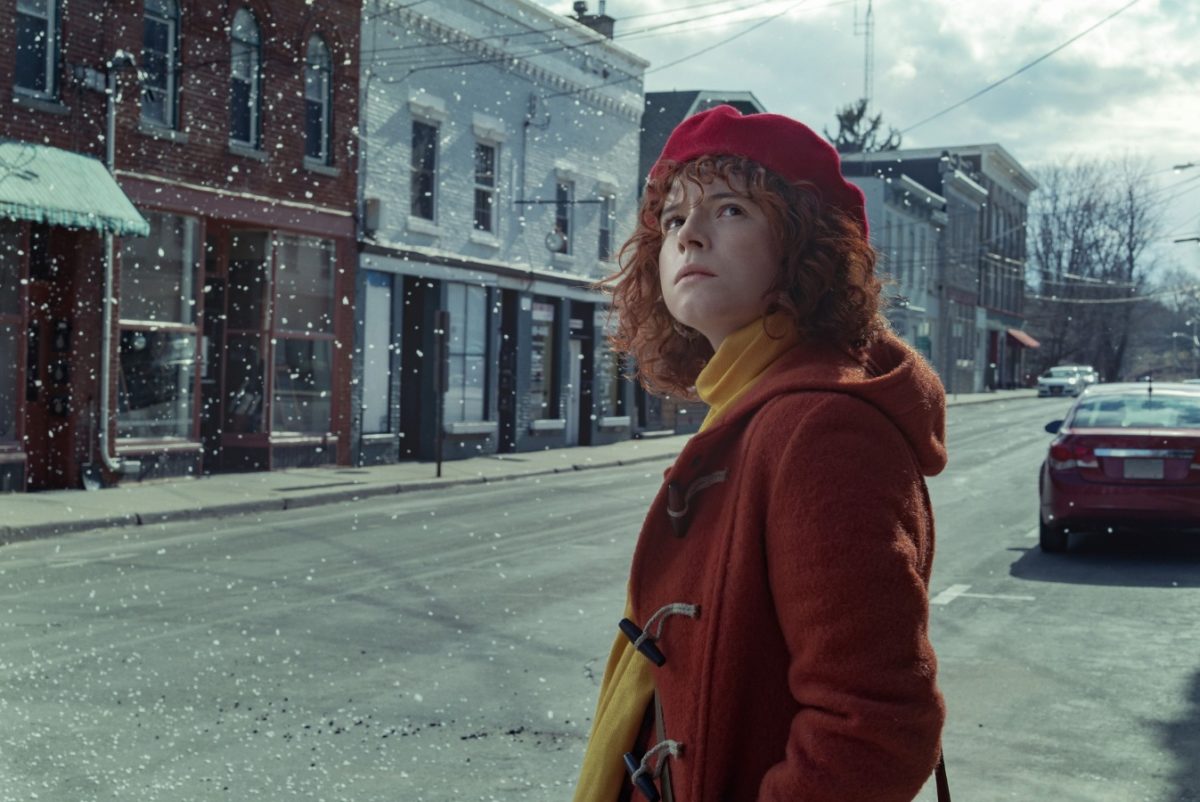
Both book and film are told from the perspective of the Young Woman, essentially a figment of Jake’s imagination, but in the film her physical presence in the form of the prodigiously talented Jessie Buckley complicates the idea that she’s merely Jake’s projection. “I wanted to give the woman character a sense of existence, an agency, that almost by definition she doesn’t have in the book,” Kaufman explains in the film’s press notes. In his adaptation, more so that in the book, the story is just as much about a woman deciding whether or not to end a relationship as it is about a man deciding whether or not to end his life.
The film’s visual language and Buckley’s complex performance bring us closer to the Young Woman and allow us to share private moments with her that Jake isn’t privy to. In the car scenes, she stares at the passing landscape out of the window, hiding her discontented expression from Jake. Meanwhile, Buckley narrates the Young Woman’s thoughts in a soft, low voice which is markedly different from the bright, jovial chirp she often puts on for Jake and his parents. By the nature of the medium, there’s a more stark difference between her public and private selves than there is in the book, where her thoughts and her conversations with Jake meld into each other in a stream of consciousness. We come to know and feel close to her as a flesh and blood woman rather than just a fragment of Jake’s personality.
The ways in which men project onto women is a theme throughout most of Kaufman’s work—most centrally in Anomalisa—and he teases out these ideas from the source material. At the end of the novel, we discover that the Young Woman is a manifestation of several women Jake regrets being too shy to pursue a relationship with. Kaufman’s version of the Young Woman is still, by nature of the story, Jake’s projection, but she can also just as easily be read as a woman who finds her relationship unfulfilling because her boyfriend projects himself onto her—a struggle many women face with their romantic partners. There’s a moment early in the film when the Young Woman reads Jake a deeply personal poem she wrote and he responds, “It’s like you wrote it about me.” It’s a clue to the fact that they’re the same person, sure. But it’s also a moment for the Young Woman to look away and sigh, because Jake is too self-absorbed to see her past his own reflection.
III: The parents
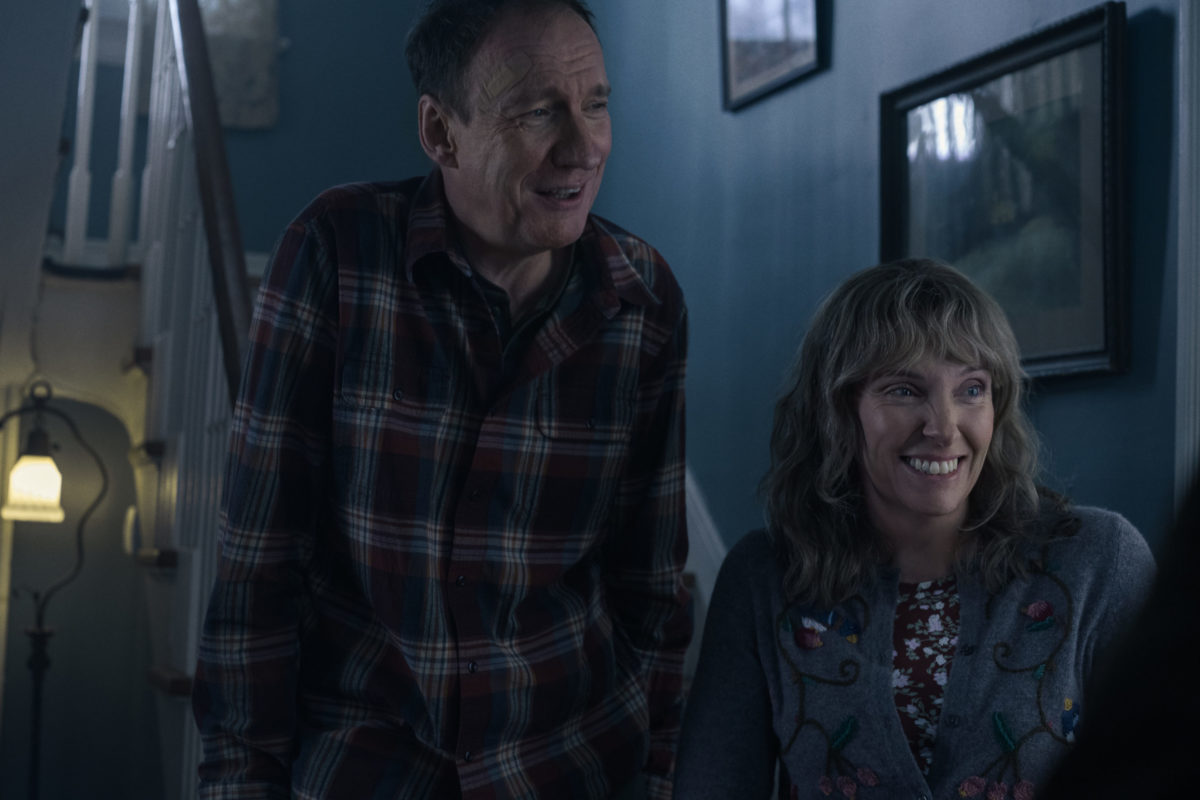
One of the most significant expansions from the source material is the role of Jake’s parents, who appear only briefly in the novel, but become a central source of both comedy and dread in the film. Reid gestures at a fear of aging with the parents, who suffer from various ailments and are revealed, at the end, to have actually died a long time ago (they are, too, figments of Jake’s imagination). Kaufman brings this theme to the fore. Throughout the dinner party in the film, Jake’s parents continually leave and re-enter the scene at different ages: we see Thewlis as a spry younger man and as a 90-year-old with dementia; Collette plays her character as a bubbly housewife and, moments later, on her deathbed. Even their dog is caught up in this strange time loop: it (eventually) greets the Young Woman when she arrives at the house, but when she goes upstairs to Jake’s childhood bedroom, the dog’s ashes are in an urn on his shelf.
Kaufman makes it clear to us, in a way that it wasn’t in the novel, that the parents are a reflection of Jake and the Young Woman. He does so by having the actors adopt similar tics, like Buckley and Colette’s shared manic laughter, or their propensity to forget or misuse words. The Young Woman spends the film obsessing over the end of her relationship with Jake even though they only got together mere weeks ago. Seeing his parents, who act so much like them, waste away before her eyes in quite an upsetting manner, only intensifies her anxieties about settling for Jake.
IV: Originality (or lack thereof)
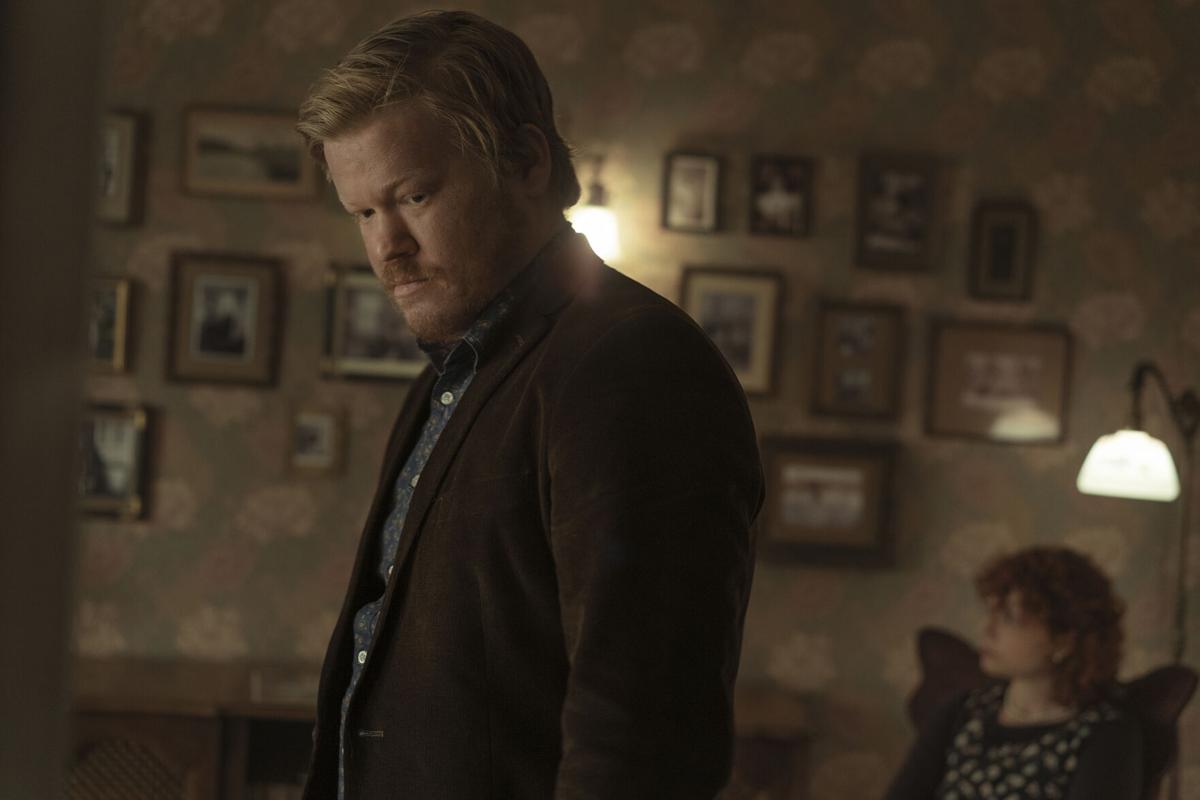
Perhaps the biggest fundamental change Kaufman made to the source material was building in a layer of self-reflexive commentary about his own creative process, as he did with Adaptation. Midway through the film, the Young Woman discovers that paintings she herself (or Jake?) thought she had painted are really works by Ralph Albert Blakelock. She also discovers a book of poems featuring the poem she read aloud earlier in the film and claimed to have written, only in this book it’s printed under another person’s name. She narrates: “It’s tragic how few people possess their souls before they die. ‘Nothing is more rare in any man,’ says Emerson, ‘than an act of his own.’ ‘Most people are other people, their thoughts are someone else’s opinions, their lives a mimicry, their passions a quotation.’ That’s an Oscar Wilde quote.” Even in her attempt to explain her anxieties about originality, she steals other people’s words.
It feels like Kaufman is unspooling and exploring his own creative anxieties on screen, not just those of his characters. I’m Thinking of Ending Things may be unlike anything you’ve ever seen before, but it’s full of references to writers, filmmakers, artists, musicians… in fact, almost nothing in the film actually is original. The poem the Young Woman reads is actually written by Eva H.D.; there’s an entire monologue quoted verbatim from Pauline Kael’s review of A Woman Under the Influence; and the film ends with Jake singing a number from Oklahoma! after reciting John Nash’s Nobel Prize speech from A Beautiful Mind. And of course, so much of the dialogue is pulled directly from Reid’s novel. Leave it to Kaufman to critique the unoriginality of adapting a novel within his own film adaptation of a novel.
But the film isn’t totally nihilistic. I’m Thinking of Ending Things might sustain the novel’s despairing tone, but the joy that Kaufman takes in playing with the tools of cinema is undeniably thrilling. The dream ballet that ends the film is beautifully shot and majestic; the animated pig that talks to the dying janitor is both creepy and wryly funny; and the glimmers of musical sequences throughout the film, hinting at what is to come, provides unexpected moments of bliss. The scenes are heavily inspired by other works—dream ballets, for example, were a fixture of classic Hollywood musicals. But packed into one film, Kaufman’s references, inspirations, and the source material that he’s working from create something that feels totally new, constantly challenging, and thoroughly captivating.
V: The ending
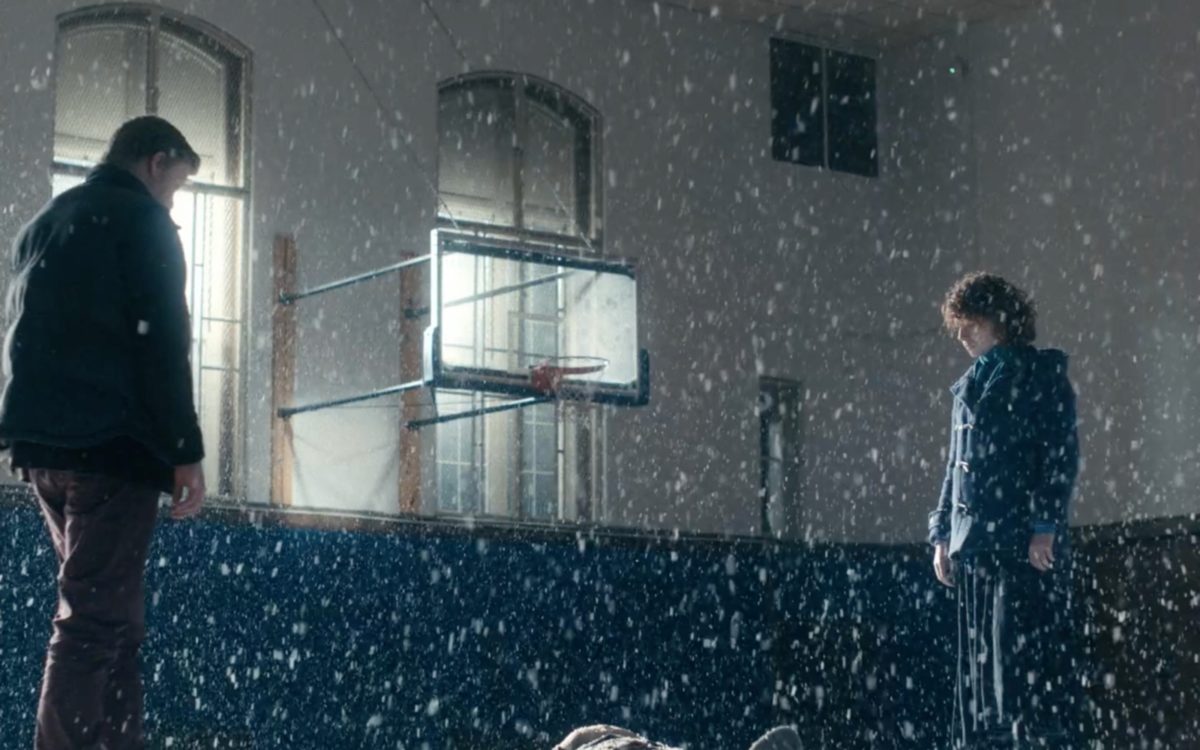
The end of Reid’s novel is absolute. The narrator’s claustrophobic journey through the school’s hallways ends with them dead in a closet, unable to face the world or themselves. Their death is made absolutely clear to us, as Reid describes the act in detail.
Kaufman seems far more interested in exploring suicidal ideation than the act itself, so he crafts a more ambiguous ending that’s nightmarish whether the narrator kills themselves or not. He sprinkles in hints that what we’re seeing has happened before. Jake drags the Young Woman to the school so he can dispose of two cups of ice cream they had bought along their journey, but when she follows him into the school, she sees hundreds of identical cups in the dumpster. Is the narrative we’re witnessing something that the narrator plays out every single night as he considers whether to end things, living out his darkest nightmares in his head on repeat?
As she waits outside the school, the Young Woman wonders to herself, “How long does it take to get hypothermia? Maybe it’s not a bad way to go, if I have to go.” Later the janitor, who we’re meant to understand is the same person as the Young Woman, sits naked in his freezing cold car and hallucinates—is this him dying? Kaufman gives no easy answers, since the final scenes take place in a fantasy world with no hint at what’s happening to the janitor’s corporeal form. Only in the final shot do we crash back down to reality and the credits play over the image of a car submerged in snow. Is there a dead body within, frozen from the cold? Perhaps. But wait long enough and you’ll hear the sound of an engine trying to start. It’s almost a darker ending than Reid’s. If we’re to believe that the narrator lived to see another day, who’s to say they won’t go through the same nightmare again every night to follow?

